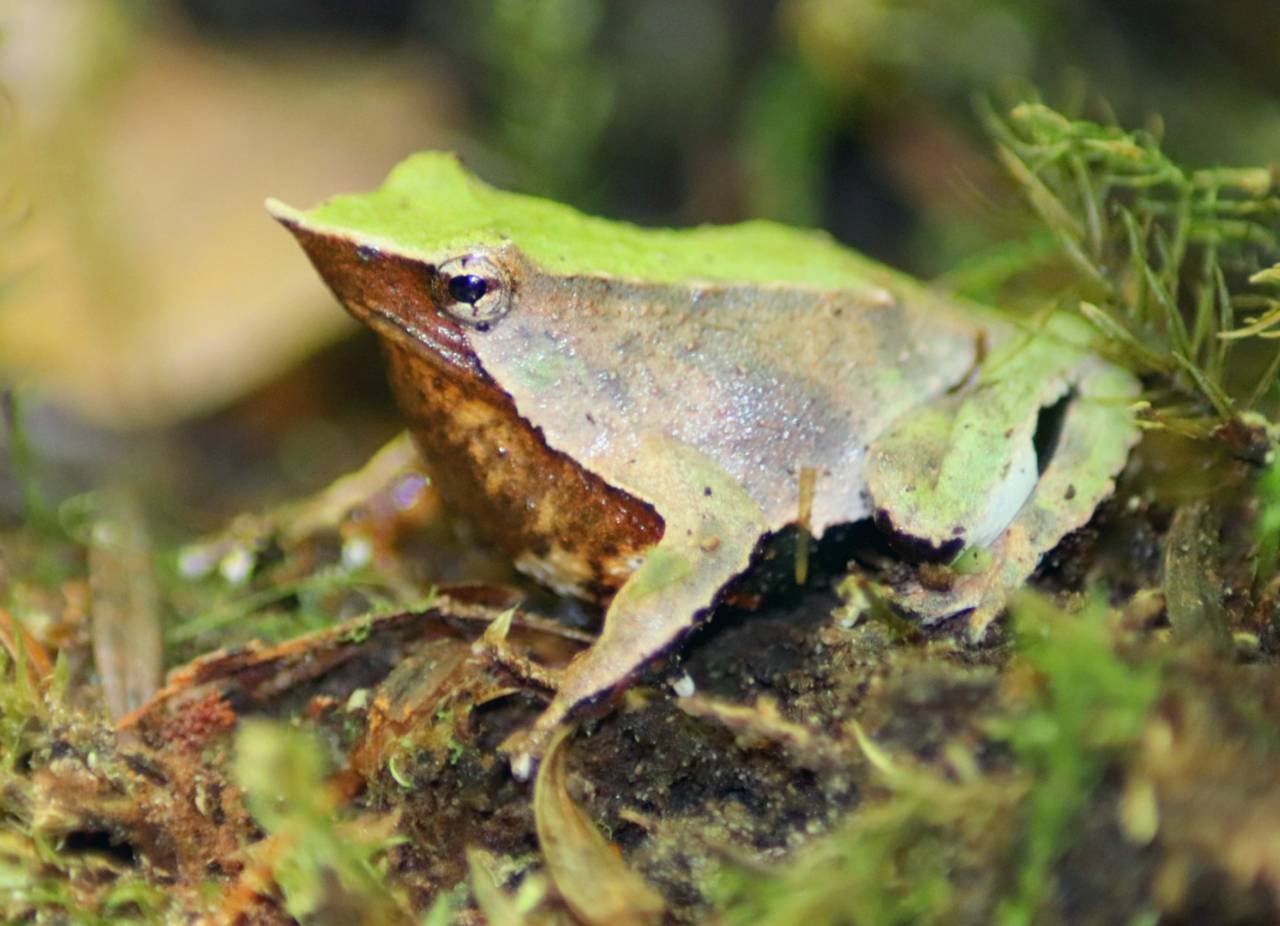The Rhinodermatidae family, known for its remarkable mouth-brooding adaptation, represents a fascinating group of frogs native to South America. This family encompasses a small number of species that have intrigued scientists due to their distinctive reproductive strategies and morphological features. Let’s delve into the world of the Rhinodermatidae family and explore what makes these amphibians unique.
Characteristics and Morphology
The defining characteristic of the Rhinodermatidae family is the unique pointed snout, reminiscent of a leaf shape, which provides excellent camouflage against the forest floor’s detritus. This adaptation aids in their survival by allowing them to blend seamlessly into their surroundings, protecting them from predators.
Key Species
Darwin’s Frog (Rhinoderma darwinii)
- Habitat: Found in the temperate forests of Chile and Argentina.
- Remarkable Feature: Known for its unusual reproductive strategy, where the male carries developing tadpoles in his vocal sac until they metamorphose into froglets.
- Conservation Status: Classified as vulnerable due to habitat loss and environmental threats.
Chile Darwin’s Frog (Rhinoderma rufum)
- Habitat: Historically limited to Chile.
- Remarkable Feature: Shares the mouth-brooding adaptation seen in Darwin’s Frog, though the species’ current status is critically endangered and possibly extinct.
Habitat and Distribution
The Rhinodermatidae species are endemic to the temperate rainforests of South America, particularly in parts of Chile and Argentina. These regions provide the cool, moist environments necessary for their survival, characterized by dense vegetation and abundant leaf litter, which offer shelter and a rich array of food sources.
Reproduction: Mouth-Brooding Strategy
The most fascinating aspect of Rhinodermatidae frogs is their reproductive strategy known as mouth-brooding. After the female lays eggs, the male takes on the responsibility of caring for the young. He transports the developing tadpoles into his vocal sac, where they stay protected from environmental hazards and predators until they fully develop into froglets and are ready to survive independently.
Conservation Efforts
The unique characteristics of the Rhinodermatidae family have made them a focus of conservation efforts. Threatened by habitat destruction, climate change, and diseases such as chytridiomycosis, conservation strategies include habitat preservation, monitoring population dynamics, and research to understand and mitigate threats.
FAQs About the Rhinodermatidae Family
What is a distinguishing feature of Rhinodermatidae frogs?
They are known for their pointed snouts and the unique reproductive strategy of mouth-brooding, where males carry developing tadpoles in their vocal sacs.
Where are Rhinodermatidae frogs found?
These frogs are native to the temperate rainforests of Chile and Argentina.
Why is mouth-brooding significant?
Mouth-brooding offers the developing young protection within the male’s vocal sac, enhancing their survival rates compared to external development.
What are the main conservation challenges for Rhinodermatidae frogs?
They face threats from habitat loss, environmental changes, and diseases like chytridiomycosis. Conservation efforts focus on protecting habitats and understanding population dynamics.
Are Rhinodermatidae frogs endangered?
Yes, particularly the Chile Darwin’s Frog, which is critically endangered and possibly extinct. Conservation efforts are essential to protect these unique species.

